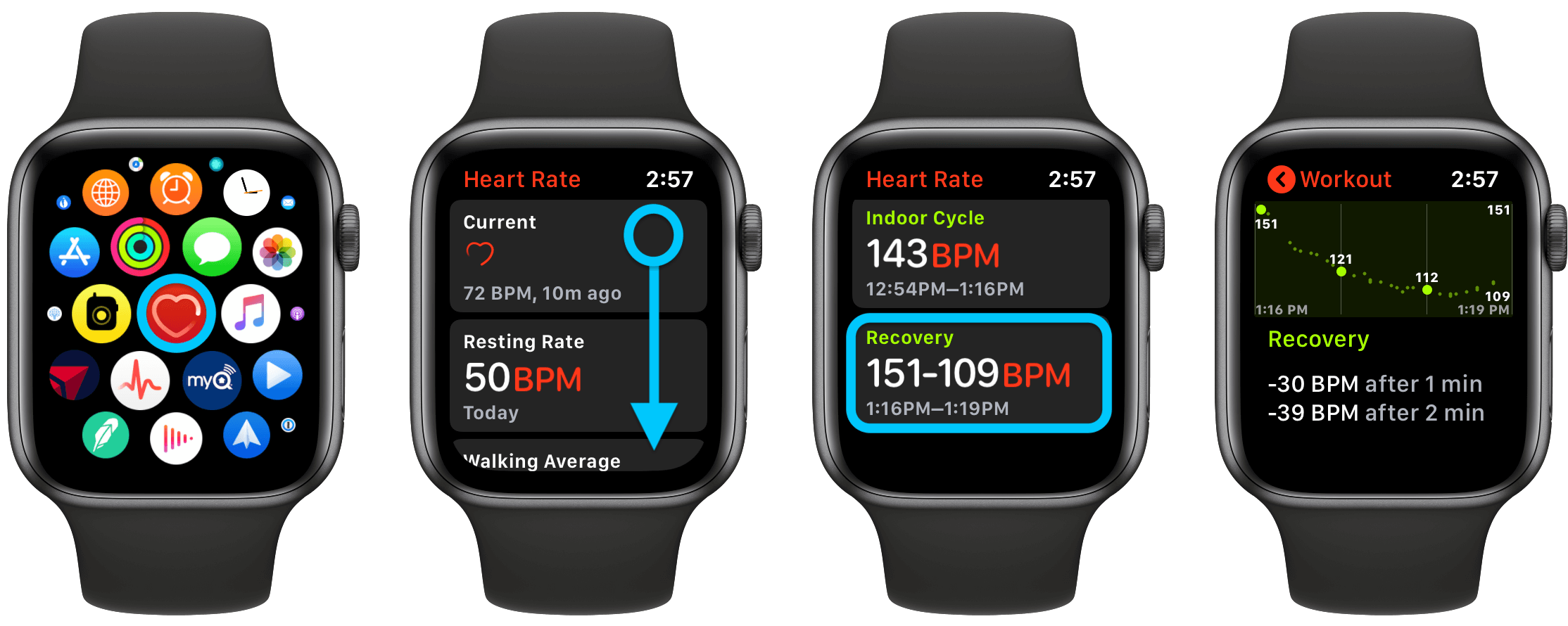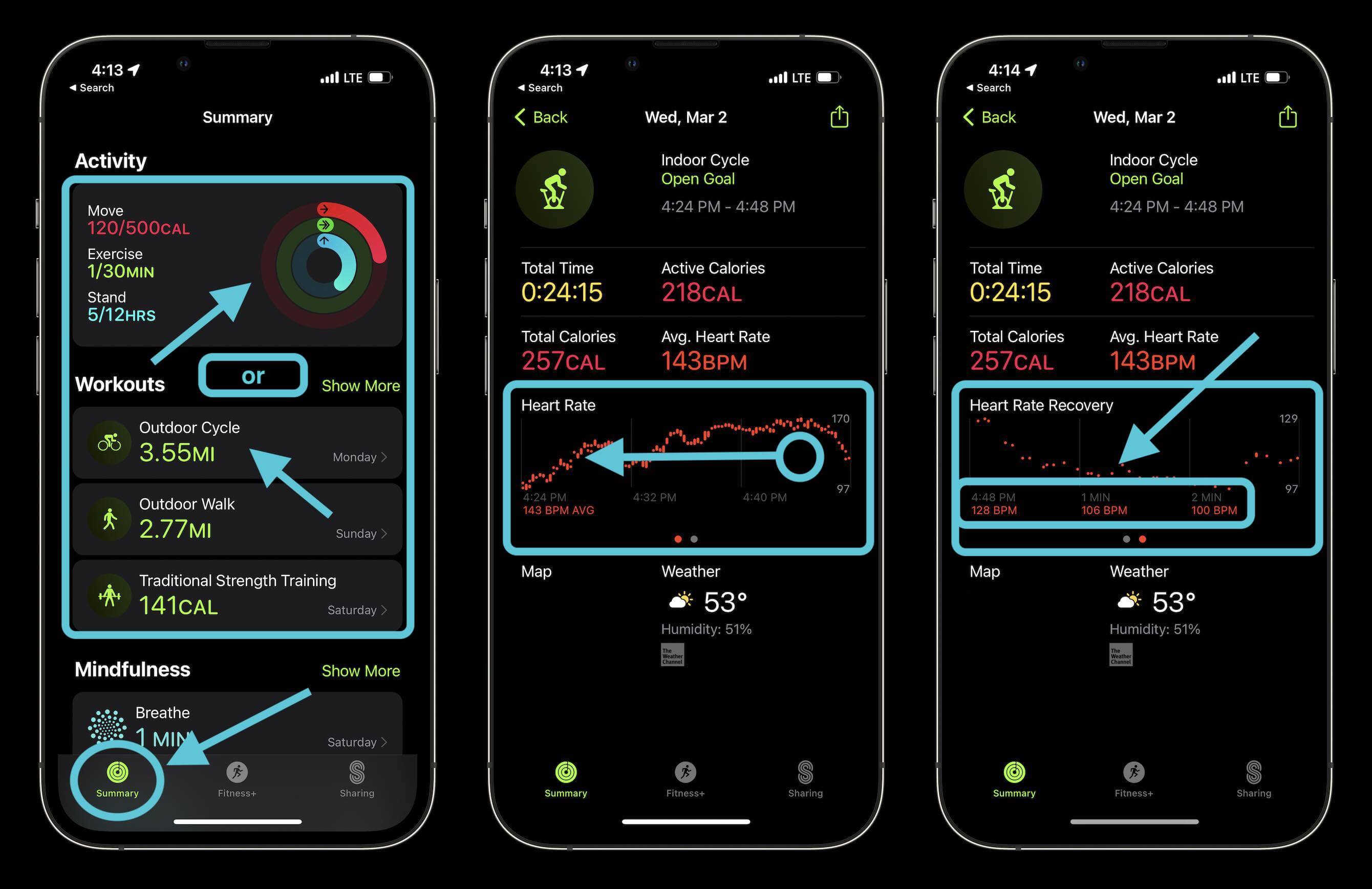Like HRV and VO2 max, heart rate recovery is a lesser-known health metric tracked by the Apple Watch. Follow along to learn how to view Apple Watch heart rate recovery data, why it’s important, what good heart rate recovery looks like, and some tips to improve it.
What is heart rate recovery and why is it important?
Heart rate recovery measures how much your heart rate drops immediately after a workout. Like heart rate variability, heart rate recovery (HRR) provides a glimpse into the health of your heart by how quickly it responds to the autonomic nervous system.
MedPage Today explains HRR as follows:
Measures of this activity reflect the balance between the sympathetic nervous system (which activates fight and flight responses) and the parasympathetic nervous system (which activates “rest and digest” activity) and has been shown to be powerful predictors of mortality.
An abnormally low heart rate was found to predict that people are twice as likely to die within six years in one of the most cited, over 1,000-cited studies by Cole, Blackstone, Pashkow, Snader, and Lauer.
Connected:
What are good heart rate recovery rates?
More recent studies confirming the results of Cole et al. the results show that a heart rate of 13 or higher (meaning a drop of 13 beats per minute or more) after 1 minute or 22 or higher after two minutes is in the normal/healthy range.
However, keep in mind that for the most accurate heart rate recovery testing, you need to stop your Apple Watch workout recording right after your workout. For example, if you continue your workout after you’ve finished, stretched, sat down, relaxed, and then finished your workout, you’ll see low heart rate readings because Apple Watch doesn’t compare peak or near-peak heart rate with heart rate over 1 and 2 minutes after training.
Similarly, workouts that include a cool down will also skew heart rate readings. And third-party apps that support starting workouts on Apple Watch, like Peloton, etc., can also end workouts before the wearable can measure heart rate recovery. In these cases, heart rate recovery numbers will not appear on your Apple Watch or iPhone.
Don’t worry if you notice a low heart rate here and there, and these numbers can vary depending on your age and other factors. But if you consistently see yourself below the numbers above and stop your Apple Watch workouts as soon as you finish them, it might be worth checking with your doctor about this.
Another note: A 2018 study published in the Journal of the American Heart Association concluded that heart rate recovery measured as little as 10 seconds after exercise may be more accurate for predicting mortality, but the Apple Watch sticks to the more traditional 1- and 2 minute approach.
Apple Watch Heart Rate Recovery: How to Track and View
Apple Watch
Apple Watch will automatically track your heart rate recovery. This happens when you finish tracking your exercises, so be sure to leave your wearable turned on for three minutes after that (according to Apple).
To view heart rate data:
On Apple Watch, go to the Heart Rate app Swipe or scroll down. If you have a workout record for the day, you should see a “Recovery” section. Touch it to view details. 1 and 2 minutes after your workout Keep in mind that you will need to leave your Apple Watch on after your workout so that you can take heart rate readings. To view heart rate data for previous days, you need to go to your iPhone, follow the instructions below.
see also

iphone
To view Apple Watch heart rate recovery data from previous workouts, go to the Fitness app on iPhone. Select the “Summary” tab at the bottom. Tap a recent workout on the home screen or tap the Activity rings > select a day > swipe down to find your workout(s) Find your heart rate data at the bottom > swipe left to right to see your heart rate

Interestingly, Apple doesn’t include heart rate recovery data in the Health app under the Heart section.
How to improve heart rate recovery?
There are several ways to improve heart rate recovery. Wearable device manufacturer Whoop shared this list of tips to improve the response between your heart and autonomic nervous system:
Quality sleep Avoid dehydration Eat a nutritious diet Practice meditation or breathing exercises Reduce stress Avoid alcohol
Read more guides on:
Reading now
The post what is it and how to track appeared first on Gamingsym.
